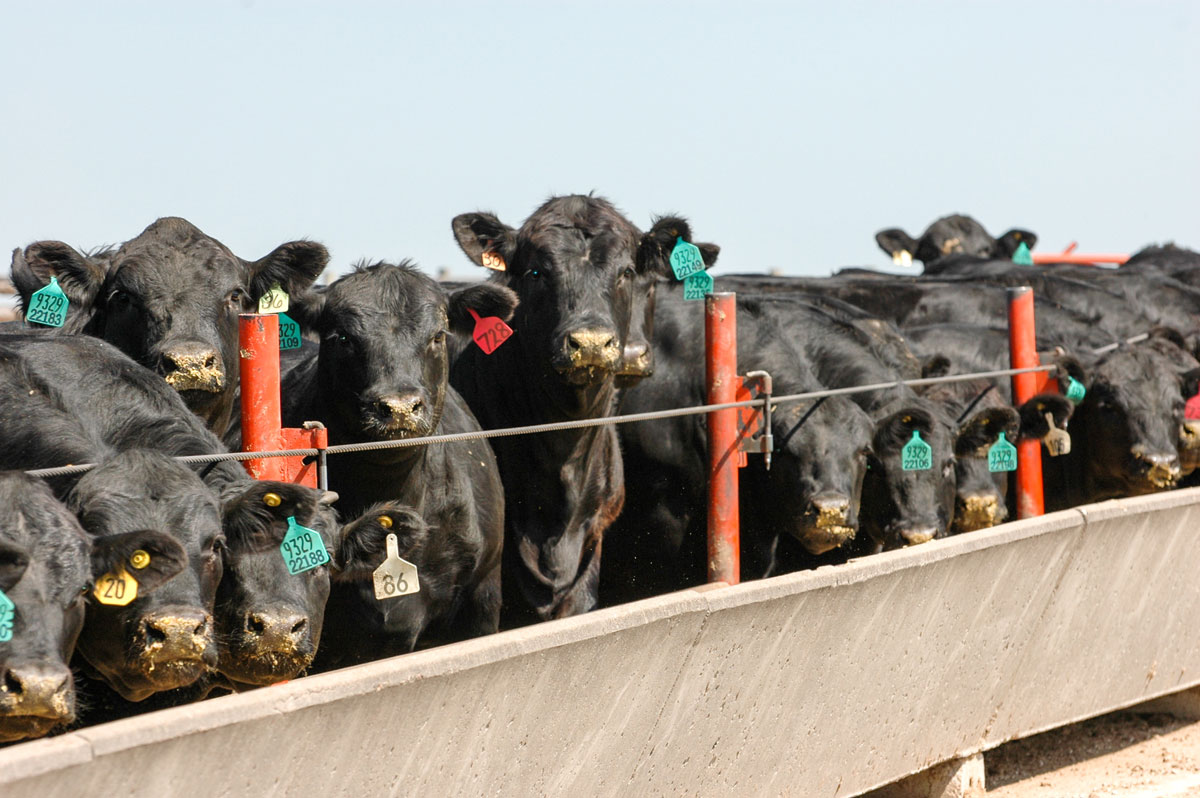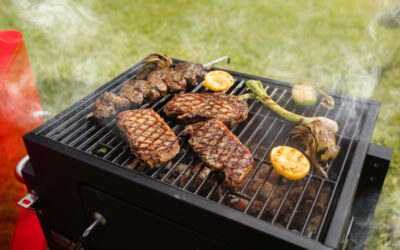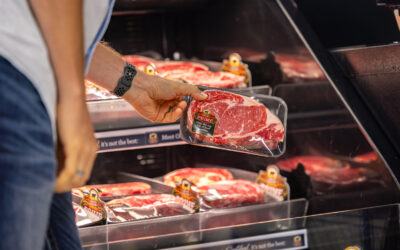
2020 Hindsight
Dichotomies, erratic patterns, stabilization–last year had it all
by Paul Dykstra
June 10,2021
The late-December ritual of swapping out the prior year’s calendar from the refrigerator or office wall has never been such a unanimously welcome experience as that which drew a close to 2020. A light toss toward the trash can wasn’t enough to punctuate our collective distaste with the year that will become a major historical footnote.
The cattle business year in review is painted primarily with COVID-19 irregularities. The year began with a semblance of normalcy on the heels of the tumultuous 2019 market, sent haywire as Tyson Fresh Meat’s Kansas fire-damaged plant lay idle more than five months. A year ago few could have imagined the more widespread and lasting pandemic impacts that lay in wait.
Panic buying household essentials and food items sent U.S. consumers to stores in droves last March. Beef supplies were not in jeopardy, nor was weekly production hindered at the time. Yet fear of scarcity drove the masses to fill their freezers, effectively clearing out retail meat case supplies.
Packers immediately responded. By the fourth week in March, fed cattle slaughter ramped up to 549,000 head, 13% more than a year earlier and what would be the year’s largest volume week. That response withered in April and May as a varied mix of packing plant personnel experienced COVID-19, forcing shutdowns and slower production. At its worst, commercial steer and heifer slaughter slowed to 318,000 head for the week of April 27, roughly 60% of normal.
Prior to the pandemic anomalies, 2020 began with fed cattle carcass weights on a 17-pound (lb.) year-over-year increase through February. Carcass weights typically slide toward their lows in May, but it was quickly apparent they’d departed from normal—a foreboding trend as April saw curtailed processing capacity. Cattle inventories backlogged as feedyards learned of plant closures and slowdowns. That caused carcass weights to increase unseasonally through mid-May.
Two diverging price patterns emerged early in the pandemic. Exaggerated consumer demand coupled with processing slowdowns culminated in record-high boxed beef prices. The comprehensive cutout value peaked in early May at $4.22/lb., the highest ever one-week average, nearly double the price in recent years for that week.
Two weeks earlier, fed-steer values, already erratic, fell to a spring low of $97/cwt., a level that would be revisited and further depressed in late June. The dichotomy of cattle-versus-product pricing sent the production sector into what can lightly be termed “discontent,” rekindling long-standing questions about price discovery and congressional proposals to legislate trade.
Packer margins were record high, but packers had their own challenges to deal with. They went to work implementing preventative health measures within their plants and invested rapidly in personal protective equipment.

Weekly packing throughput recovered at a surprising pace. The federally inspected slaughter total reached 95% of the prior year at 627,000 head for the first week in June. July weekly totals came in at 99% of the 2019 head counts while the remainder of the weeks in 2020 saw harvest totals bounce above and primarily just below those of the prior year.
The unprecedented carcass weights recorded in the past year—a byproduct of extended days on feed through the backlog—notably impacted carcass quality grades and fat content. The chart clearly shows how Choice and Prime quality grades responded to these two factors as early as mid-April, when the backlog began.
From May through September, combined Choice and Prime quality grades improved an average 5.5 percentage points (ppt.) over the prior year. The industry has seen a gradual increase in quality grades since 2006, with Choice improving an incredible 20 ppt. in the period, with Prime up 6 ppt. However, the two categories combined managed only a 5.5-ppt. gain in the last five years. The 2020 grade improvement was abnormally high, but we’ll likely see that pattern soften in the coming year as carcass weights align with more normalized weekly harvest rates.
The enormity of the carcass weight chasm was highlighted as USDA steer carcasses averaged 52 lb. heavier, year over year, the week of May 11. Fourth-quarter data showed the trend unresolved, but slowly moderated to a 17-lb. differential.
Feedyards, faced with no alternatives in the face of either packer logistics or too many overfed cattle, largely shifted away from grid marketing in the height of the backlog. Thus, they were unable to capitalize on carcass quality in early June when the boxed beef price spreads seasonally widened on time, amid the market disarray. By late November the Choice/Select spread gradually widened again to $21/cwt., while grid premiums for the Certified Angus Beef ® (CAB®) brand peaked near a $6/cwt. average in early December. Demand for premium quality product was as strong as ever while tonnage of Choice, CAB and Prime beef edged out the 2019 figures.
CAB carcass supplies mirrored industry-wide trends early in the pandemic. Brand product shortages sent committed retail partners scrambling for quick-delivery amidst exploding demand. The short-term phenomenon forced flexibility when shorted CAB product orders meant substitutions.
By year’s end, the retail grocery sector was the unintended beneficiary of mandated restaurant shutdowns, boosted further by on-line ordering and curbside pickup. CAB retail sales ran 12% higher by the brand’s September 30 fiscal year end and grew from 43% of the overall total to 51%. October went on to mark the second largest sales volume for that month in the brand’s history, supported by both renewed demand and larger fall supplies.

The flip side of that good news is its opposite.
The restaurant trade was one of the most dismal business stories of 2020 in the wake of closures and capacity restrictions. During the worst of it, restaurant sales were off by well over 50%, with many businesses closing permanently, unable to pay vendors, landlords, staff or creditors. Government assistance helped a little, but most restaurants took extreme measures in attempts to stay viable. While eateries adapted menus to curbside and take-out only, foodservice distributors also made significant staffing cuts.
These business aspect are vitally important, yet intertwined with the great loss of lives, careers and livelihoods that can’t be ignored.
On the supply side of the equation, backlogged cattle and extended days on feed factored heavily in recovery for the brand. The April-May weekly CAB carcass supply deficit near 24% righted itself to a 2% surplus by the second week in June. That turnaround only strengthened as seasonal grading records pressed CAB carcass qualification to similar records.
Record Prime grade tonnage matched inconveniently with restaurant dining restrictions and closures to keep a lid on Prime premiums. First-quarter Prime premiums ran near 40% higher than the year prior but the imbalance quickly turned Prime premiums 37% below 2019 for the second and third quarters. Holiday rib demand and strong overall beef demand turned the tide again by November, pushing the Prime premium 14% above the 2019 trend.
Strong demand for the brand throughout 2020, and CAB premiums above Choice boxed beef values defied market disruption. Extreme shortages logically sent the CAB price as high as $33/cwt. above Choice in the most extreme example in late May. Yet even as supplies normalized and outperformed the prior year beginning in June, the CAB/Choice price spread, counterintuitively, averaged near 60% higher than the year before.
Cattle and beef trends will chart a different path for the remainder of 2021. Seasonal slaughter rates continue to reflect the pandemic-influenced placement patterns. Yet, we’ve learned in the past 12 months that in the face of legitimate food-security concerns, consumers ran to beef.
Demand surged even in what was an economically devastating year for many Americans, and consumers ate at home under unique circumstances. The unintended surge in high-quality beef supply in the second half of 2020 held cattle prices artificially lower than retail beef demand justified. As the industry inches toward equilibrium, one thing is certain about the path forward: we are on the right track as it relates to product quality.
Originally ran in the Angus Beef Bulletin.
You may also like
Progress, Not Complacency
Beef demand has been exceptional because of dramatic increases in consumer satisfaction for a few decades. Since taste ranks at the top of the list when it comes to what drives consumers to choose beef, we know where our figurative “bread is buttered.”
Cutout and Quality Strong
Summer weather has begun to set in with more regions of the country set to experience hotter temperatures. This means the traditional turning of consumer focus toward hamburgers and hot dogs rather than steaks, the spring favorite.
CAB Sets Sales Records, Sees Historically High Brand Acceptance Rates
In an otherwise tough time in the beef business, sales and supply records have been a bright spot. The positive numbers mean that quality beef production has not let up, and beef demand is holding. Consumers have proven the value proposition: the good stuff is worth a little more money, for a better eating experience.



